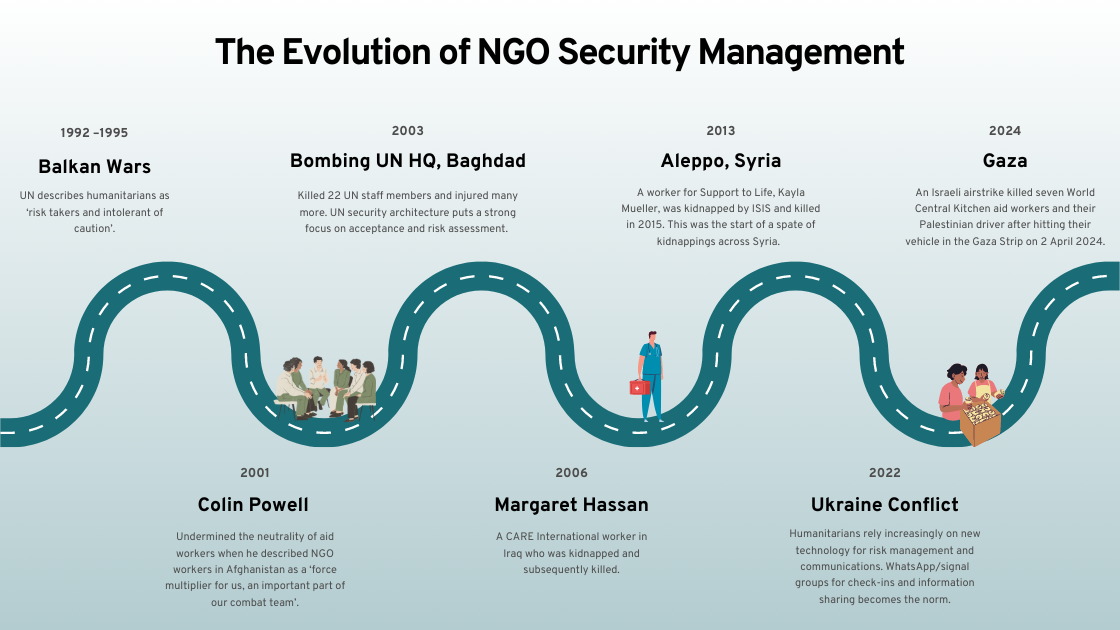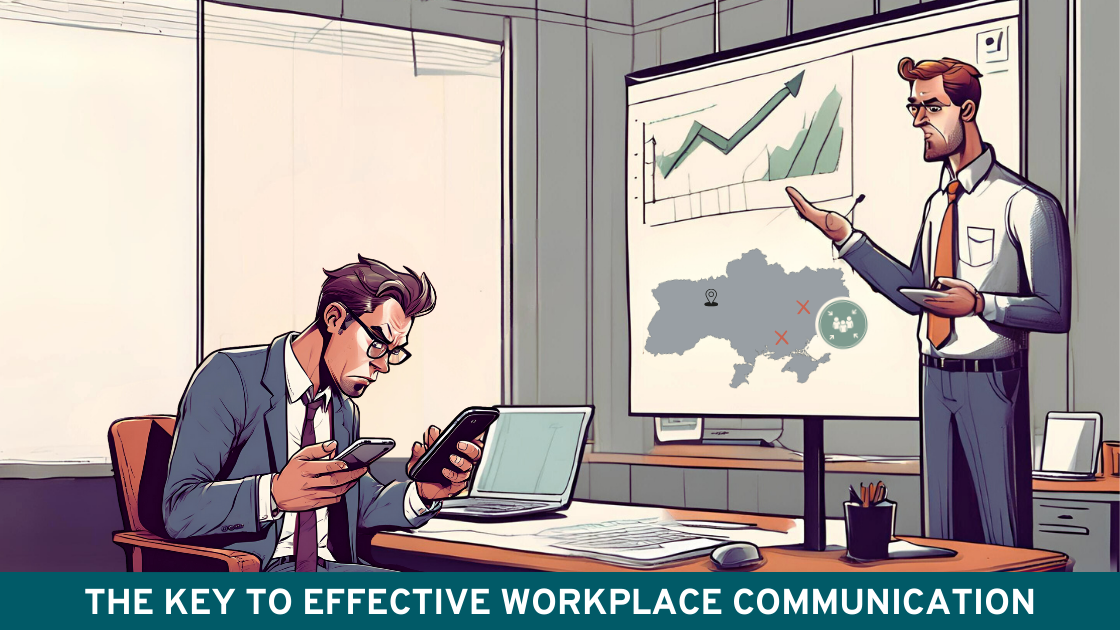Insight: How to Convince Purpose-Driven Teams to Prioritise Their Own Safety
Aid workers from non-governmental organisations often find themselves at the forefront of conflicts, natural disasters, and other emergencies. Mental health trauma, burnout, injury and sadly all too often, loss of life, are real risks. Humanitarians are inherently mission-centric individuals, driven by a deep commitment to alleviate suffering in some of the world’s most perilous environments. Their work is not just a profession; it is a calling.
However, in the pursuit of their mission, aid workers sometimes put the needs of those they are assisting over their own security and well-being. It is not uncommon for humanitarians to knowingly expose themselves to risk.
Safety and security personnel face the challenge of instilling a shared value of personal safety while also demonstrating that they enable the mission. So, how do humanitarian safety managers address this conundrum and what are their main messages?

Strategies
The Importance of Self-Preservation:
One of the first lessons in first aid is to emphasise self-preservation for the individual delivering the aid. If a first responder becomes a casualty, it reduces the overall effectiveness of the emergency response and may worsen the situation.
Elizabeth Dewiler, co-founder of Collective Security Group (CSG), which provides security solutions for NGOs, has conducted over 80 security trainings and workshops in over 20 countries. One of her techniques is to start by referring to a highly relatable concept that is emphasised every time we get on a plane:
“Airplane safety briefings always stress the importance of, in an emergency, putting your own oxygen mask on first before helping others. Quite simply, if you’re not going to survive, you’re not going to be able to do your job – so the analogy of the oxygen mask is a convincing way to explain why it’s important.”
A People Tailored Approach:
Another key lesson to encourage mission-driven teams to take safety seriously is to involve individuals in their own risk management and bespoke it specifically to them.
Anne Pellichero, a veteran humanitarian security manager, believes in intentional empowerment. She states, “You have to make people responsible. Everyone is responsible for someone or something on a mission, and that’s what makes people involved in security. The Head of Drivers is accountable for fleet and maintenance management. A driver is responsible for their individual car and their passengers. If [everyone] knows why they must do the job well, for themselves and for others, there’s no doubt that they’ll feel involved and do a better job.”
Tim Law, Chief Operating Officer at the David Nott Foundation, also stresses the need to customise risk management to the individual. “In the past, people used to focus on the threats and hazards that were present in the environments they were going to, without thinking about the vulnerabilities of the people that were going there.
“Human centric risk management is a trend that we’ve seen more of since Covid. When you start to consider who may be more susceptible to certain diseases, or be more at-risk due to protected characteristics, you can work with them to get a much clearer picture of their actual risk.”
The Need for Adaption:
Security managers in the NGO space must be flexible and open to personal growth to address evolving circumstances and new risks.
Jamie Monteith, Senior Humanitarian Accompanier at DePaul, explains: “Technology-wise, the [Covid] pandemic brought about much more willingness to do things on Zoom, leading to more opportunities for collaborative work such as communities of practice.”
While this improved efficiency, it also necessitated a heightened focus on digital safety within the humanitarian space.
Jamie elaborates: “Looking after our digital security has become more important too – how much of that is the security advisors’ job, how much is the IT department’s role? There’s so much information out there that you can access within seconds. And this can in some ways make situations riskier but can also give intelligence that can feed into risk management. The issue then becomes an overload of information, sorting through it and filtering out what is credible and relevant.”
By continually adapting to the changing needs of their organisations and teams and framing their message in a relatable way, humanitarian safety practitioners consistently demonstrate their value to the sector.
Tactics
As always, personality and persuasion play significant roles in achieving results. Strategies alone are not sufficient enough; a tactical understanding of implementing them is crucial. The risk experts we consulted highlighted the following approaches to persuade teams to take risk seriously:
- Build personal relationships: Spend time fostering strong relationships with key team members. Listen and understand their needs and circumstances in the field, becoming a trusted partner who provides support and guidance.
- Stress the operational effectiveness of risk management: Highlight that policies, procedures and risk assessments are not merely bureaucratic requirements. They enhance mission effectiveness and strategic thinking, leading to better outcomes for the people being assisted.
- Involve people in the process: Embrace a people-centric approach and encourage your teams to take ownership of risk management. This will lead to increased engagement and buy-in. Besides, local teams often possess valuable insights into local risk levels, making them an essential source of information.
- Pick your battles: Choose carefully which initiatives to push, and which may be ‘nice to have’ but aren’t a priority. Prioritise initiatives that are key for safety and mission success but avoid overwhelming your teams with unnecessary information that won’t enhance their safety.
- Use real life examples and statistics: People are more motivated to take action when they can relate to a situation and envision its impact. Share real-life examples or statistics to make the risk tangible and relevant.
- Make it compulsory: Sometimes, safety measures are mandatory. Many organisations require risk assessments or training to be completed before a person can embark on a mission. Whether it is a legal requirement, internal policies, or donor stipulation, communicate that certain actions are non-negotiable.
Conclusion
Appetite and tolerance for risk is notoriously high amongst humanitarians – seemingly an inherent requirement due to the perilous environments in which they operate. Nonetheless, security managers have actively challenged mental complacency and elevated safety to the forefront of decision-making, making it a priority alongside the primary mission.
By employing a combination of strategies and tactics, NGO security managers have and continue to foster a culture that values self-preservation, empowerment and continuous adaptation. This ensures that aid workers remain effective in their vital mission while also staying safe.
At RiskPal, we empower safety and security leaders to drive safety engagement within their organisation. RiskPal is a smart risk assessment platform that streamlines safety processes. We are dedicated to making safety simple and compliance straight forward. Reach out if you have any questions or need assistance in enhancing your safety and risk management processes.



